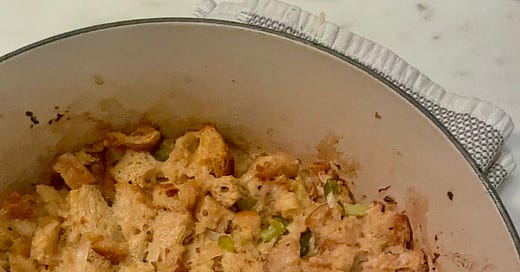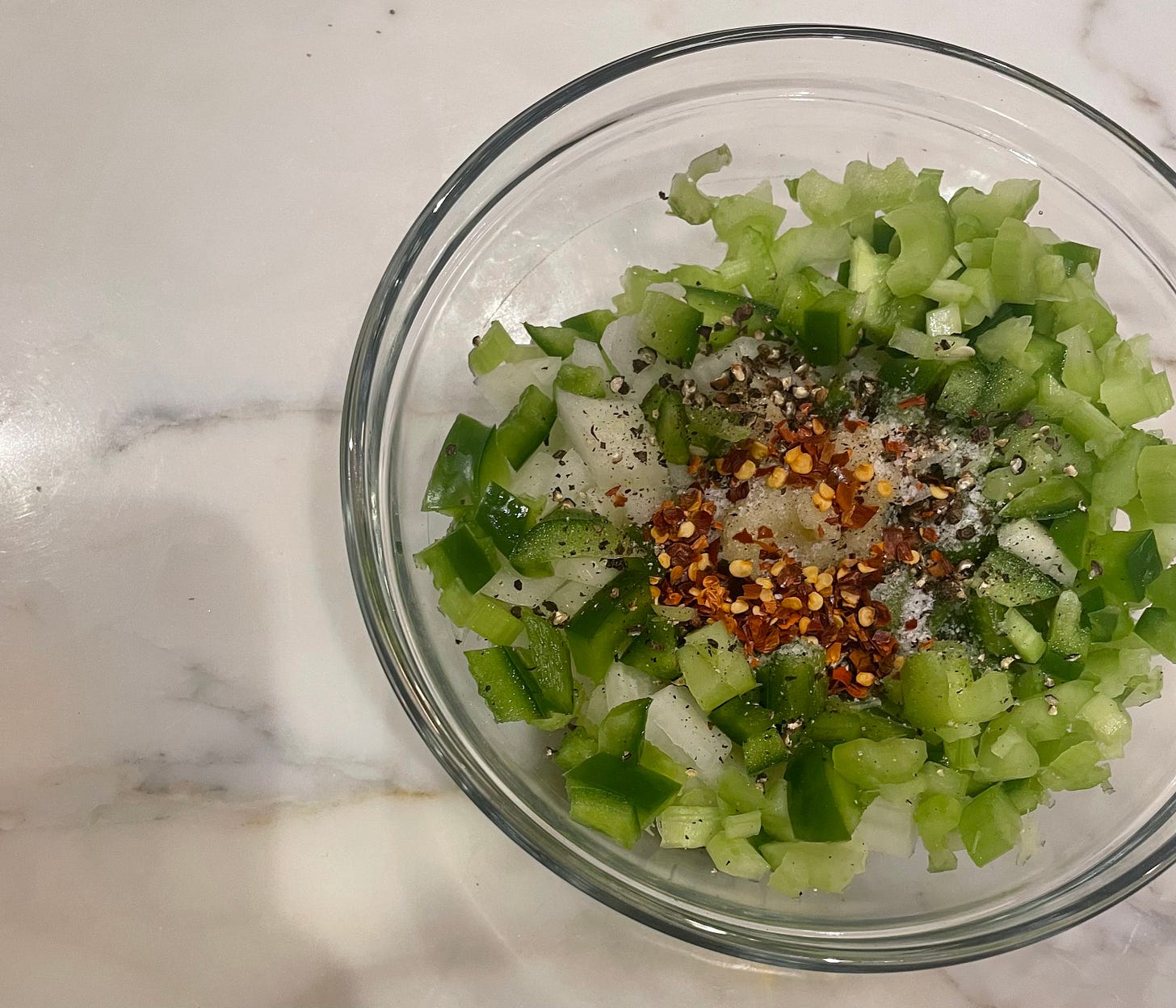A few months ago, I was deep down an internet rabbit hole when I stumbled upon this story in
about Lena Richard, a Black Creole chef and cookbook author from New Orleans who had a show on television more than a decade before Julia Child did. I couldn’t read the story fast enough, and it left me both curious and embarrassed. I’ve spent months and months of my life in New Orleans, and I think I know a few things about the food there and its history — and I’d never heard the name Lena Richard.Since then, I’ve done a fair amount of reading about Richard, with plans to do more, and I ordered her book, “New Orleans Cookbook,” and read it cover to cover. Published in 1940, it’s an extensive compendium of Creole cooking, with base recipes, variations, sauces, dressings and more. Like most cookbooks of that era, the language reminds me of the recipes my family has passed down for a few generations; it assumes a knowledge of basic cooking that’s in some ways lost. The instructions are vague at times and always brief; it’s a book with small dimensions, and there are sometimes three recipes on the same page.
I’m planning to cook my way through parts of Richard’s book in the coming months, and the first recipes I was drawn to were the ones that reminded me of holidays: creamed spinach and pie crust, popovers and stuffing. I was especially inspired by Richard’s recipe for a “plain” bread stuffing, and I’ve spent the past few weeks using it as inspiration for a Thanksgiving dish.
Dutch oven stuffing
adapted from Lena Richard’s bread stuffing
active time: 40 minutes
total time: 1 hour, 40 minutes
servings: 8-10
Lena Richard’s recipe for “plain” bread stuffing has a lot of things I enjoy — onion, green pepper, garlic — and I was intrigued by the fact that it had a little bit of a kick. Richard’s recipe called for actually stuffing something with the stuffing — a novel idea! — whereas I like to make stuffing on its own, as more of a savory bread pudding. I scaled the recipe up, tweaked some spices, downplayed the celery and landed on just the right level of moisture to make this cross the threshold from crouton to actual stuffing. Oh, and I decided to make it a one-pot production, which may be the thing I’m proudest of.
This stuffing is classic and savory, a teensy bit spicy and really simple to make. Don’t skimp on the duck fat; it adds a level of flavor dimension that you won’t want to miss.
Preheat your oven to 350°F, and make sure your racks are spaced so there’s room for a large Dutch oven with its lid on.
Pour 1 cup of dry white wine and 1 cup of vegetable stock into a liquid measure and stir briefly to combine.
Crack 2 large eggs into a blender.
Chop ½ of a large yellow onion, ½ of a green pepper and 2 stalks of celery into a very fine dice. (If you’re a perfectionist, aim for 110 grams of onion, 80 grams of green pepper and 50 grams of celery.) Combine the vegetable mixture in a medium bowl and grate 2 cloves of garlic on top. Season the vegetables with ½ of a teaspoon of freshly cracked black pepper, ½ of a teaspoon of red pepper flakes and 2 teaspoons of kosher salt (preferably Diamond Crystal).
In a large Dutch oven (preferably 9 quarts, or something that’s 12ish inches in diameter), heat 4 tablespoons of unsalted butter and 3 tablespoons of duck fat over medium heat. Once the fat is melted, lower the heat to medium-low and add the bowl of vegetables, garlic and spices. Stir to fully incorporate the garlic and spices into the veggies. Cook the mixture for 10 minutes, until the onions are translucent. If you notice any of your vegetables browning, lower the heat; your goal here is to soften everything, not crisp it.
While the vegetable mixture cooks, take a 1¼-pound loaf of white bread, preferably pre-sliced, and cut it into cubes. Think of aiming for your pieces to be between the size of a sugar cube and a die. Use the crust, too! Different textures are fun.
Once the vegetables have softened, carefully add the bread cubes to the Dutch oven and stir slowly to incorporate. Keep stirring, really letting the vegetables, spices and fats meld with the bread and allowing the bread to fry a bit in the fat. Cook the bread, stirring occasionally, for four minutes, until you notice some of the pieces browning.
Pour 1 cup of the wine-stock mixture over the bread, and stir to combine. Let the bread cook for 1-2 minutes, and then turn off the heat.
Pour the remaining wine-stock mixture into the blender with the eggs, and pulse the blender briefly to combine. It will only take a second, and you’ll be left with a frothy white mixture. Pour the wine-stock-egg mixture over the bread in the Dutch oven, stirring to incorporate fully.
Make sure the bread is in a uniform layer in the Dutch oven. Cover the Dutch oven, and place it in the actual oven. Bake the stuffing for 25 minutes. After 25 minutes, remove the lid and continue baking for 35 minutes, until the top of the stuffing is beginning to brown and crisp just slightly — but before it dries out.
Allow the stuffing to cool for 10 minutes and then serve.
leftover pumpkin pie filling chocolate chip muffins
active time: 10 minutes
total time: 30-35 minutes
makes 9-12 muffins, depending on your preference for muffin size
I have never in my life made a pumpkin pie — or any pie, actually — and found that I’ve had the exact right amount of filling for my crust. That’s especially the case around Thanksgiving, when I find myself making more pies than I have pie plates — and making pies to give away — so I resort to using those little disposable aluminum dishes. They hold less than any pie plate I own, which means more leftover filling, which means waste. But behold, a solution: muffins!
On Saturday, I made this pumpkin pie with pepitas (yum), and I wound up with almost exactly 1 cup of leftover filling. Using some common baking ratios, I came up with a muffin recipe in a pinch, and it should work with most pumpkin pie filling recipes, assuming they contain a sweetener of some sort (sugar, maple syrup, agave), some milk or cream, a couple eggs and the requisite blend of spices. You’ll notice I’m not using precise language here, and that’s because no two filling recipes are the same, and also because these are not precise muffins. These are good muffins — very good muffins, even. But they’re not going to win any awards for beauty or innovative taste. They’re just a means of turning food waste into a tasty breakfast.
Preheat your oven to 350°F, and make sure you have a rack in the center of the oven.
Melt 2 tablespoons of unsalted butter and allow it to cool slightly.
Pour 1 cup of leftover pumpkin pie filling into a large bowl.
Whisk in 1 egg, the butter and 140 grams of sugar, incorporating until the mixture is smooth and uniform.
Add 190 grams of flour, ¾ of a teaspoon baking powder, ½ of a teaspoon baking soda and 1 teaspoon of kosher salt (preferably Diamond Crystal). Using a wooden spoon, mix until the flour is just incorporated, though the mixture will still be a bit lumpy.
Add 100 grams of bittersweet chocolate chips and stir until they’re just incorporated.
Place baking cups in a muffin tin; this recipe will make 12 smallish muffins or 9 slightly larger muffins. (Filling the cups about ⅔ of the way will yield 12 muffins.) For 12 muffins, bake for 20 minutes, or until a toothpick comes out clean. For 9 muffins, bake for closer to 25 minutes.











Very informative and interesting 👏🏻